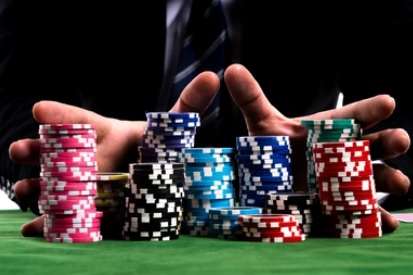Last week we started looking at the relationship between bluffing and semi-bluffing for the purposes of being able to construct examples to study that allow us to build our intuition, or our feel for the game. We specifically looked at scenarios where we only had nut outs. This week, we’re going to look at what happens when you add non-nut outs to the situation.
If you followed along last week, you’ll remember that I suggested you work through my EV Calculations series that showed you very simple ways of doing somewhat complex EV calculations. The calculations we’re going to look at this week are built on the model that was presented in that series, but I won’t be walking through them in a step-by-step fashion. If you’d like, you can skip the actual calculations and just look at how they are related to each other.
What Reverse Implied Odds Really Means
When you say you have implied odds, that means that you can expect to win future bets some percentage of the time when you hit a hand on later streets. Whenever you’re semi-bluffing with non-nut outs, there’s a chance that you hit your hand and lose anyway. This is what reverse implied odds is all about, and it’s basically the same thing except you realize that you’re going to hit your hand and lose future (and current) bets some percentage of the time. Our goal this week is to show you how to create examples that will allow you to build an accurate feel for reverse implied odds.
Another Instructive Example
Last week, I provided a basic, bare-bones example that you could work with by changing different variables to see how the overall EV was affected. This week, we’re going to do the same sort of thing. Here is our example scenario:
We’re on the turn, heads-up and out of position. The pot is $12 with $28 behind, and the board is 2s7c6dAs. We hold JTs of spades. We bet $8 as a semi-bluff. If our opponent raises, we fold. If our opponent calls, we have a chance to hit on the river. If we miss spades on the river, we never place another bet, and we never win the hand. However, if we hit spades on the river, then we go all-in for our final $20. Our opponent will either fold, call with a worse hand, or call with a better hand.
There are a few variables we can manipulate in this situation, and we’ll have to know all of these variables in order to analyze what’s happening with the EV. In no particular order:
- How often our opponent folds the turn.
- How often our opponent raises the turn.
- How often our opponent folds the river.
- How often our opponent calls the river and we win.
- How often our opponent calls the river and we lose.
We’re going to look at two different cases within this set of variables and compare what happens between the two:
- Case 1: Villain folds the turn 40%, raises the turn 10%, calls the turn 50%, folds the river 75%, calls and we win 25%, calls and we lose 0%.
- Case 1: Villain folds the turn 40%, raises the turn 10%, calls the turn 50%, folds the river 75%, calls and we win 15%, calls and we lose 10%.
As you can see, these two cases are exactly the same except for one small change in what happens on the river. This reflects the introduction of reverse implied odds created with non-nut outs. In effect, it’s like we have KQ in spades in the first case and a non-nut flush draw in the second case.
Next, we’re going to quickly evaluate the EV of each of these cases to look at what changes and why:
Case 1: No Reverse Implied Odds
I’m going to simply list the possible outcomes here without too much in-depth description. If you want more information on where these numbers are coming from and why we list all of this out like we do here, then check out my EV Calculations series where I show you how to make all of this easy. Here are the six outcomes with their respective EVs:
- Villain folds: 0.4($12) = $4.80
- Villain raises: 0.1(-$8) = -$0.80
- Villain calls, we miss our draw: 0.5(37/46)(-$8) = -$3.22
- Villain calls, we hit our draw, Villain folds river: 0.5(9/46)(0.75)($12+$8) = $1.47
- Villain calls, we hit our draw, Villain calls river, we win: 0.5(9/46)(0.25)($12+$8+$20) = $0.98
- Villain calls, we hit our draw, Villain calls river, we lose: Doesn’t happen = 0
The total EV for this case is $3.23.
Case 2: With Reverse Implied Odds
If you want to build your feel for these types of situations, then what you really need to pay attention to here is which parts of the EV equation changes and why. Here are the six outcomes:
- Villain folds: 0.4($12) = $4.80
- Villain raises: 0.1(-$8) = -$0.80
- Villain calls, we miss our draw: 0.5(37/46)(-$8) = -$3.22
- Villain calls, we hit our draw, Villain folds river: 0.5(9/46)(0.75)($12+$8) = $1.47
- Villain calls, we hit our draw, Villain calls river, we win: 0.5(9/46)(0.15)($12+$8+$20) = $0.59
- Villain calls, we hit our draw, Villain calls river, we lose: 0.5(9/46)(0.10)(-$8-$20) = -$0.27
The total EV for this case is $2.57.
What You’re Looking For
The reason this example is so instructive is that you can see how each individual piece of the EV equation changes for different sets of parameters. Here, you see that when going from Case 1 to Case 2, we lose value in both the fifth and sixth possible outcomes. we lose $0.32 worth of value in the fifth outcome, and then we add an additional loss of $0.27 with the addition of the sixth outcome. Seeing how this works is extremely important because it allows you to compare several different sets of parameters to see how much the different outcomes are being affected by the changes in those parameters.
Submit your review | |









